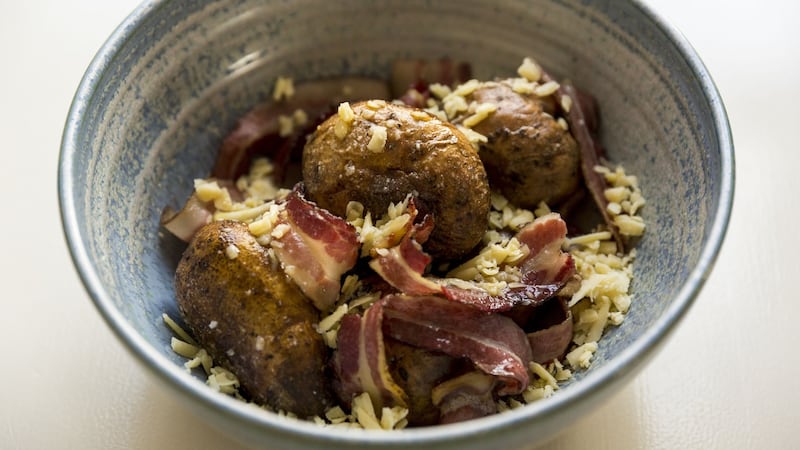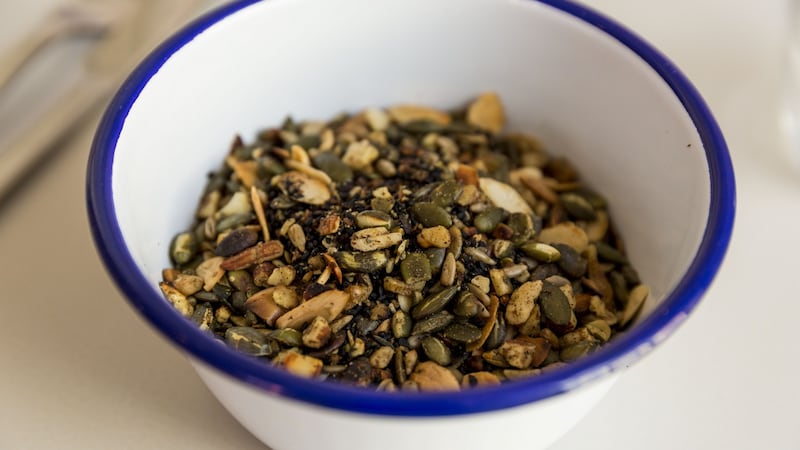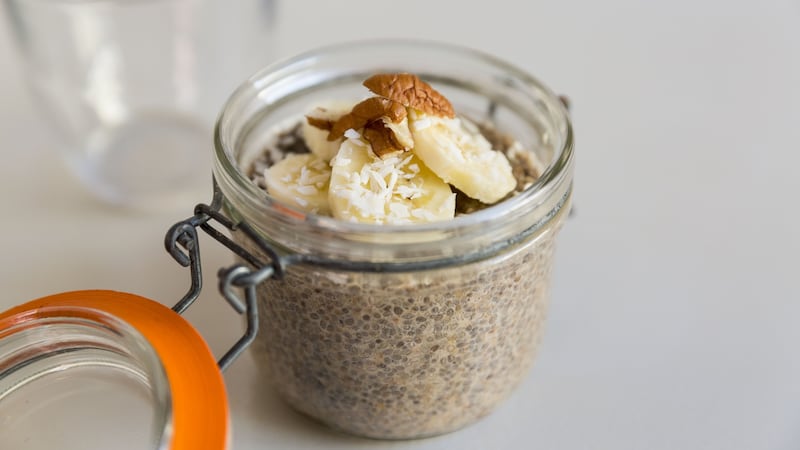Parents and children often have a difference of opinion on what to eat during exam times. Last week, I talked about brain food and nutrition but I am constantly reminded by my daughters that we all need balance and there is always room for comfort food. This week I have asked my daughter, Ellen – who has done her Leaving Cert twice and is a big promoter of comfort food – to share her views with you.
“My mother wrote last week that nutrition is important for exams, that mid-Leaving Cert, students should cling desperately to brain foods rich in vitamins, minerals and fibre to keep things healthily moving along as they sludge through exams. She’ll also tell you that adequate hydration is the difference between a clear head for English Paper 1 and a frenzied attempt at trying to spell “onomatopoeia”. I can verify that, scientifically, she’s dead on. I can’t negate those facts.
“But let’s talk emotions.
“The Leaving Cert is one of the most strangest situations you’ll ever find yourself in, and while it is important to adequately nurture the body, the soul, now more than ever, needs intense nurturing, too. I’d recommend doing that with frequent walks and food (and I’m not talking pumpkin seeds).
For the next two to three weeks, sixth-year students try to earn points in order to access their future. If that saddens your soul a little bit, I know your strife, for it was once mine too. When I did my Leaving Cert, my year group survived on bags of raspberry bonbons, and only a cheeky stuck-out blue tongue in the midst of a physics paper lifted us out of our study ruts for a few brief seconds.
I can’t possibly recommend surviving off the sweet counter for the exams; however, I can’t be a total advocate of steamed kale, either.
Thankfully Mother and I, being constant compromisers, have found a sweet spot. It lies in the middle of the spectrum between confectionary and pak choi. and that place is comfort food. We’ve discovered several things that blend the desirable with the nutritious. Find the foods that bring some brief reprieve from the monotony and hold them dear. If they have something healthy in them, that’s just a happy coincidence. These are challenging weeks, and students need to be good to themselves.
PIPERADE
This interesting egg-based dish from the south of France is ideal for exam season. Play around with the ingredients to suit your taste. I make this dish for a friend who can’t eat peppers by adding in other interesting ingredients such as fennel or courgettes.
The vegetable base for this dish can be made in advance and used as needed, which makes it ideal for a quick breakfast. It’s also one of those dishes that works for any time of the day.
Serves 4
4tbs olive oil.
300g red, green, yellow peppers, sliced.
100g red or white onion, sliced.
4 tomatoes
3 cloves of garlic, crushed.
Salt and pepper
Basil leaves.
Chopped parsley.
8 eggs
1 Heat the oil in a pan, add the peppers and onions and season well with salt and pepper. Cook slowly, without browning, until very tender (especially the peppers) and then add the tomatoes, garlic and some of the basil and increase the heat for two minutes, mixing well.
2 You can now cool the mixture and keep it in the fridge for up to five days.
3 When needed, reheat the mixture over a low heat until heated right through. Or if cooking for one, take quarter of the mixture and heat.
4 Beat the eggs lightly with salt and pepper to taste. Pour into the thickened tomato and pepper sauce. Stir until the eggs are softly scrambled. Sprinkle with the parsley and some more basil and serve immediately, before the eggs overcook.
SALTED BAKED NEW POTATOES WITH CRISP BACON AND MELTED CHEESE: SERVES 4

This dish is pure comfort and as it’s a one pot (well, tray) dish, so you don’t have to spend too long in the kitchen. I created this out of the need to please, comfort the student and fit into my busy day.
I do this dish throughout the year, but with the first of the new potatoes it’s a real treat. If you are growing your own potatoes, plan a day when you can dig and cook within a few hours and savour the flavours and the freshness. I love to eat this with a big green salad scattered with toasted pumpkin seeds and a mustard dressing.
20 small new potatoes
Olive oil
Flaked sea salt
12 slices of streaky bacon
200g grated Parmesan or cheddar
1 Heat the oven to 200 degrees. Take a cast-iron saucepan or a deep roasting tin and add the potatoes, followed by enough oil to coat them evenly. Sprinkle well with salt and rub it all over the potatoes.
2 Place in the preheated oven and bake for roughly 20-30 minutes or until a knife can pierce right through.
3 Next, place the slices of bacon on top and return to the oven and cook until the bacon is cooked to your liking.
4 Finally, sprinkle in the cheese and mix well. Place a lid on top and allow to stand for five minutes before eating.
MAGIC SEED MIX

Seeds and nuts are perfect brain food. Onion seeds are also known as Nigella seeds, and you will find them in good health food stores. Sumac is a dried berry and is traditionally used when lemons are out of season. It’s easy to find in health food shops and supermarkets.
This mix is perfect on its own as a snack, part of a lunchbox or, my favourite: with cheese and a crisp apple.
I haven’t given quantities here as this is a good chance to use up what you have in your cupboards. Feel free to use any nuts you like and to focus on adding the seasoning to suit your taste. For me, the sourness of the sumac and the flavour of the onion seeds is what gives it it’s magic.
Sunflower seeds, chopped
Pumpkin seeds, chopped
Onion seeds
Walnuts, chopped
Almonds, chopped
Olive oil to coat
Chilli powder to taste
Sumac
Salt
1 Get the seeds and nuts together in any quantity you want in a large bowl and pour in just enough oil to lightly coat them.
2 Next add the chilli, sumac and salt and any other flavouring that takes your fancy.
3 Heat a frying pan or wok, add the seed mix and stir continuously over a medium heat for three to four minutes, or longer, depending on your quantity or until you smell the toasting in the air.
4 Allow to cool fully before eating.
CHIA SEED PUDDING

We first discovered these healthy puddings in Oliver McCabe's book The Fuel Food Cookbook. My daughters have been cooking many recipes from McCabe's books over the years but this has been one of my favourite and my introduction to chia seeds.
These are an ideal way to start your day, especially on the morning of an exam.
I have played around a little with McCabe’s recipe by adding a squeeze of lemon and some protein powder and reducing the quantities of seeds to lighten the consistency for summer.
When eating chia seeds it good to remember to drink more water, as they are dehydrating.
Serves 4
100g ripe bananas, peeled and mashed
A squeeze of lemon juice
470ml nut or oat milk
1tbs almond butter
½tsp ground cinnamon
1tbs protein powder
120g chia seeds
1 Blend the banana, milk, almond butter, lemon juice, cinnamon and protein powder in a blender for five seconds.
2 Transfer into a litre ring-lock jar and stir in the chia seeds. Close the lid and give the jar a few good shakes to mix in the seed well.
3 Put in the fridge overnight to set.
4 Eat as it is or serve with some seasonal fruits and or nuts of your choice.





















